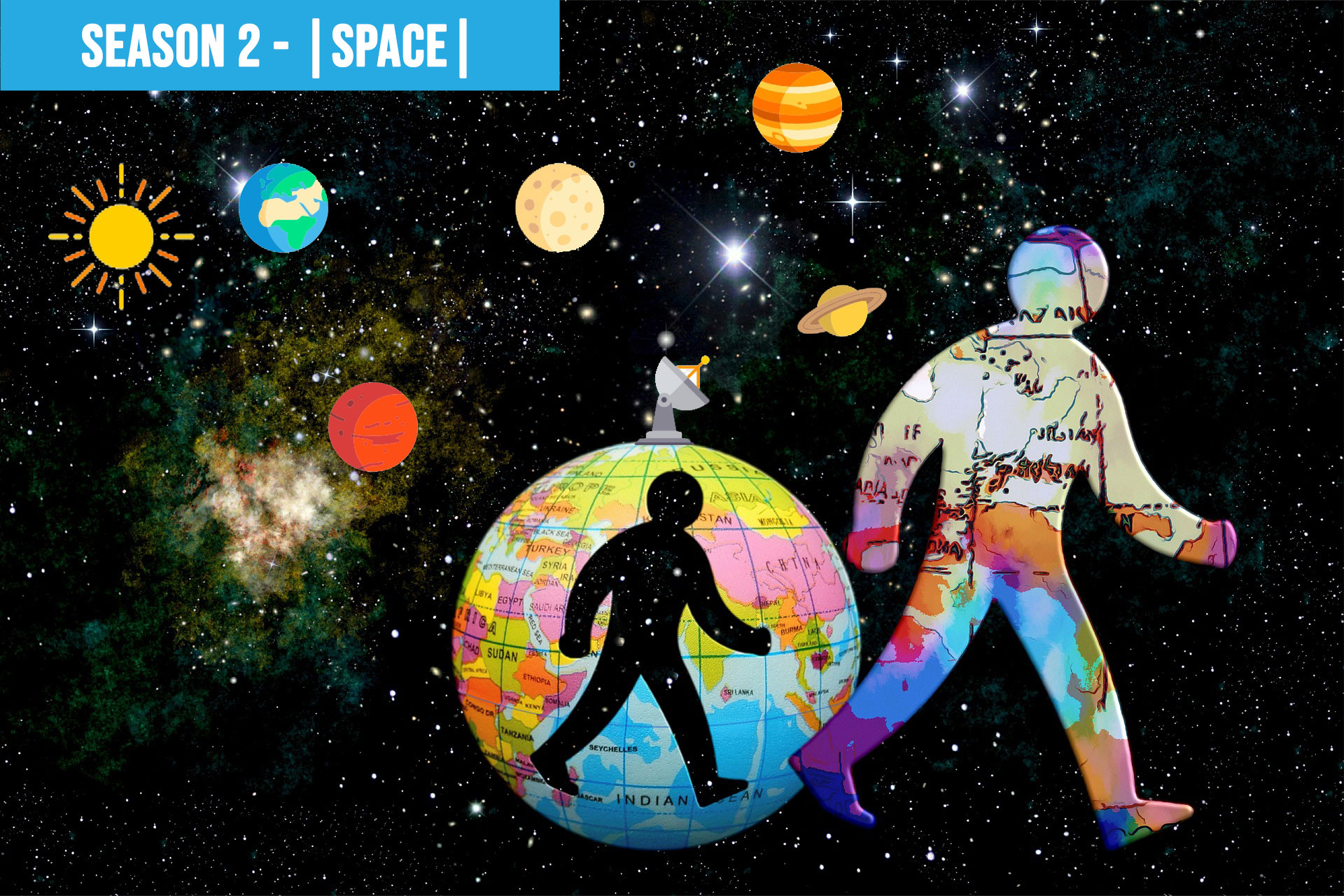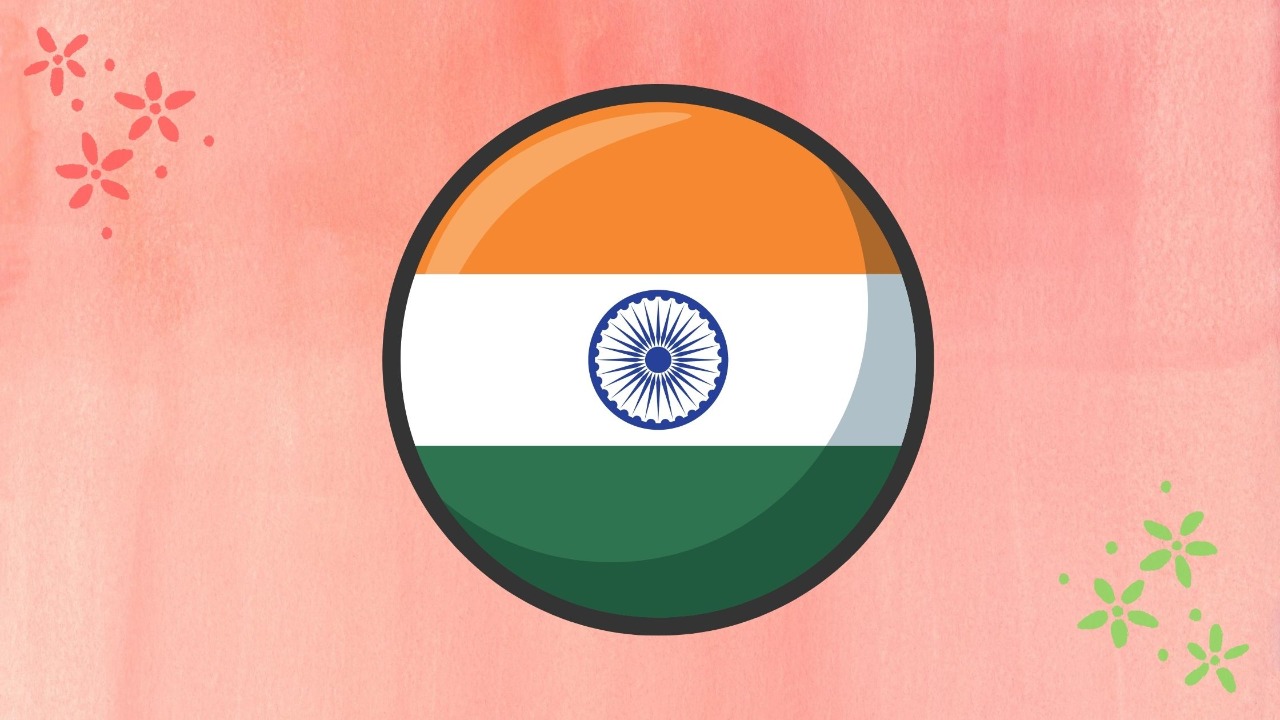025: Stars and Constellations
Dr B S Shylaja
She obtained her Ph D from the Indian Institute of Astrophysics working on Wolf-Rayet binary stars. She has more than 120 publications in refereed journals and 17 books. She was involved in several educational activities as member of text book committees, board of studies, advisory panels for science centres and museums and then retired as the Director of Nehru Planetarium, Bengaluru after working for 23 years there. There’s so much more to this dynamic guest of ours.. Do follow her blog asqphy.blogspot.com. You can find this link on my website too.
Transcripts
EPISODE 025: STARS AND CONSTELLATIONS
[0.01] {Background Music}
[0.08] Siyona: Hello all, welcome to my podcast Little Mind Chats. Minds are little, Not our thoughts. I’m your host Siyona. Hope you all are having a lovely weekend. In the past episodes in this season, we explored a lot about our Solar System, how stars are born, moon travel and a lot more about black holes. I wish to know so much more about the Stars and the Constellations.
[0.35] Siyona: For this today, I’m proud to be talking to the first lady scientist in our podcast, Dr B.S Shylaja. She obtained her PHD from the Indian Institute of Astrophysics working on Wolf-Rayet Binary Stars. She has more than 120 publications in refereed journals and 17 books. She was involved in several educational activities as member of textbook committees, board of studies, advice free panels for science centres and museums and then retired as the director of Nehru Planetarium, Bengaluru after working for 23years there. There is so much more to this dynamic guest of ours. To follow her blog, asqphy.blogspot.com. You can find this link on my website too. All in all, it’s very inspiring Dr Shylaja. Please welcome to my show.
[0.41] Dr Shylaja: It would be nice to talk to you.
[0.45] Siyona: “Welcome. Now to my first question, what exactly is Star? What makes it twinkle and shine?”
[0.53] Dr Shylaja: There is a short answer and a long answer for this. A short answer is, just go out in the night and look up the sky and you will see those dots. They are the stars. But the long answer is different. The long answer perhaps you can understand it’s a body light our own sun. But it is so far away that it looks like a dot. And what makes it shine because it emits lot of energy in the form of light and we are able to receive the light from the star and because it’s so far away it appears so as that a small dot sending the so much of light and that we call as a star. Now the second part of your question namely twinkle. Now this twinkling is, it has nothing to do with the star itself. It has everything to do with our own atmosphere. Our earth’s atmosphere is like a blanket which is covering earth and protecting earth. And of course, it is making us live here. It behaves like a glass slab through which when the light passes, it bends. It not only bends, it gets dispersant to colours also. Therefore, each colour will have a different amount of bending. So that you will see there is an attempt by the light to show different colour. But then, turbulence in the atmosphere, there is lot of air current that is going up and down. That will make the star to move this place slightly and colours also will vary slightly giving inert effect of twinkling. There is a change in the intensity. Very minute change. There is a change in the colour. This put together gives the appearance of twinkling.
[3.53] Siyona: Oh, I see. That’s why the stars twinkle. “Why do we need to identify set of stars as constellations?”
[4.03] Dr Shylaja: You see, when you go up and look at the sky, you will see so many dots. Suppose today evening, you will go out it appears to be clear and so you see something in the sky and you will call me on the phone and tell me, look up “there is something happening”. But I want to know where I have to look up. Then you will tell me look up in the constellation of Pisces, look up in the constellation of Scorpio. Then, immediately I will know where to look for. Therefore, you need some kind of a reference. For example, if I want you to come to my house, I have to give you some near by landmark or my address so that you can reach me. This can be solved by naming the groups of stars as Constellations. They served the purpose of direction. For example, today evening you just go out and see, you will see two bright planets. But you want to tell me that you are seeing something unusual in the sky. Two very bright things. How do I fix the direction? Then I will tell you to look up the stars that are in the background of these two bright. They resemble the shape of the Scorpion, that is called Scorpio. That constellation is called Scorpio. If we assign a name, they will fix the direction in the sky. Because the planets the moon and the sun are generally seen in the back drop of some fixed belt in the sky and that is called Zodiac and these 12 Constellations which are in this belt are called the Zodiacal Constellations. And they will be very helpful in telling you which the planet is in which Constellation or where is the moon. In which Constellation the Moon is. Then immediately you know where to look for it.
[6.00] Dr Shylaja: For example, I will tell you that Mars is in the Constellation of the Pisces. So where is Pisces. You go up and see you don’t see Pisces at all in the evening. Then you think that perhaps, let me take a chance in the morning. You go out in the morning and see. Then you will see Pisces and in the same direction, you will see Mars. Of course, Mars is closer to us than these stars. These stars will serve only as direction indicator.
[6.31] Siyona: “Where did these Constellations like Pisces get their name from?”
[6.35] Dr Shylaja: Pisces. Pisces is the last of the 12 constellations. It’s associated with the fish. It’s interesting! These names have been given some 2000 years ago.
[6.49] Siyona: [Surprised]
[6.49] Dr Shylaja: And who gave these names, nobody knows. But then it is in my circulation so everybody understands that. So, the moment I said Scorpio, everybody in the world will understand what that constellation is. Irrespective of the country, irrespective of the civilization, they will understand it. Therefore, this notation has been in use for the last two thousand and more years. And whether it is India or Greece or Europe or America, this name will be understood, that’s why these names have been retained. But if you look up, you will not see any fish there. You will see only group of stars and if you see Scorpio also, you have to imagine a scorpion there. You could have imagined anything else. You could have imagined an elephant also. But then, because this name is so well known, its being used continuously. They are very old. But they are very useful.
[7.45] Siyona: “Why is not star bigger than any other star in the night sky? How did ancient travellers use it as guidance?”
[7.52] Dr Shylaja: Yeah. If you imagine a belt in the sky stretching from east to west through this neck, that is the location of all these Zodiacal constellations. But there are stars in the south, there are stars in the north also. Therefore, accordingly some other constellations names have been given and one of them is greater bear or Ursa minor which is familiar to many of us. What is the importance of this? This is because it has a pole star as one of the constellations. This pole star is not a very big star. “Have you seen the pole star any time? Are you able to identify the pole star yourself?”
[8.35] Siyona: Yeah. It’s in UK.
[8.37] Dr Shylaja: Yes. Now, if you try to do the same thing here in Bangalore, you will find it extremely difficult. Because the pole star is closer to the horizon and it’s quite dim. Its not a big star at all. Big in the sense, its not a bright star. Its an ordinary star. So, it’s going to be quite difficult to even see that with this amount light pollution in Bangalore. But, on the other hand, it’s serves a very important purpose because its always in the same location. For example, in UK you were seeing it a quite height, elevation of at about 50degrees. You have to raise your head and look up the Pole star. Whereas, in Bangalore you will see it closer to the horizon. In fact, you have to search for it. It may get covered by some tall building or trees which would not have happened in the UK. So, the pole star is an indicator of the location, your location on the earth. If you are closer to the equator, it will be low. If you are moving north to higher latitudes like 50degrees, then the star will raise higher and higher and that gives you an indication of how much you have moved on the earth. Therefore, the ancient people used it for navigation. When you are on a voyage, in the middle of the ocean, you have no reference to find out whether you are going east or west or north or south. Then, this pole star only will help you how much you have moved in what direction. If you want to move south, you have to move in a direction that the pole star goes lower and lower. If you want to move north, you have to go in a direction that the pole star rises higher and higher. So, this is how it helps the navigator in the olden days. I also mentioned that it is not a very bright star. But it is a big star in deed. How do you know about the properties of the star. They all look like dots. That is where you need the telescope. And with the help of telescope, you have to use an instrument called spectroscope which will give you the final details of the chemical composition, the temperature, the size and other things of the star and that is how they have found out that pole star is fairly a large star. Bigger than the sun in the real sense of it. But because it’s so far away, and because it is faint, you are not able to get an idea of the dimensions of that by looking at it with the naked eye. Okay?
[11.23] Siyona: Oh, that’s how the ancient travellers used the north star as their guidance?
[11.28] Dr Shylaja: Yes. Yes, that’s right.
[11.30] Siyona: “What are the different types of stars?”
[11.34] Dr Shylaja: Just now I told you about the pole star. The pole star is a star of a different type as compared to the sun. Our sun is an ordinary star and we call it as a low star. Right? You go out and see the night sky, there are red stars, there are blue stars in the sky. So that’s the easiest way of telling the difference. So, this is the first step. In the sense that you can classify them based on the colour. Then, you want to understand why they are of different colours. So that takes you to the physics and from this application of physics the stars we have found out that blue stars are very hot stars and the yellow stars like the sun are intermediate temperature. And the rest stars are much, much cooler stars. So, when I say hot, the temperatures are enormous. In the sense that, even the cool star, the red star will have a temperature of 3000degrees. And the hottest star you can think of the blue star, they will have temperatures of 10000. Well, we can’t go to the star, put a thermometer there and find out. But there are many indirect ways of finding this out and from the same indirect method, we have been able to find out that they are having different sizes. Sun is an ordinary star. There are stars which are smaller than the sun. There are stars which are very much larger than, 900 times larger than the sun. They are called giant, super giant.
[13.16] Siyona: Wow. 900 times the size of the sun!
[13.20] Dr Shylaja: So, these are the different types of stars.
[13.25] Siyona: Oh. Wow. Yeah well, “you know that there is star called Betelgeuse?”
[13.30] Dr Shylaja: Yeah Betelgeuse, I think you have seen that star. Perhaps.
[13.33] Siyona: Yeah.
[13.34] Dr Shylaja: you have seen the constellation of Orion, it’s a very bright star there and that star is in news now a days. I should tell you about it. Because, its generally a very bright red star and you don’t need any body to point it out to tell, look and tell this is Betelgeuse. No that’s not true. Now, in the last 6months, it happened in December, January, it faded. It suddenly became very dim. So, people were unable to understand what’s happening to it. Okay? And subsequently, it brightened up again in the month of May. So, May, June, July it returned to its normal brightness and it was visible as a bright red star. Now, in the last few days, it has started fading again. That makes us wonder on what is happening to this star. That takes us to the lifecycle of the star. In the sense that, the stars also are born, they undergo a phase of life and finally they die. Perhaps, this star is in the final stages and perhaps it is going to die soon. Soon in astronomical term means millions of years. Because it is trying to adjust itself to some internal changes that are happening because the stars are basically producing extensive amount of energy. So, there is a sudden release of energy and the star is trying to adjust its equilibrium. They are the bodies because anything that is falling under gravity will have to be balanced against their pressure. Gas pressure which is holding it from not falling down. When there is a sudden force of extra energy that is coming from the interior, it tries to adjust its equilibrium. And in the process, it tries to adjust its equilibrium and finally there will be an explosion. The explosion is called Supernova. So, when it becomes a Supernova, the star will be as bright as Venus. Have you seen Venus?
[15.51] Siyona: Yeah. I have.
[15.54] Dr Shylaja: So, if you get up early in the morning, not very early. Even if you get up at 5.45am it should be sufficient. You turn to the east and in the blue sky, you can still see Venus. It’s dazzling. So, when Betelgeuse becomes a Supernova, it will be as bright as Venus. So, it’s going to be a big news when it dies. Okay?
[16.19] Siyona: Now, that must be fascinating to see Venus. It gives me another reason to wake up early.
[16.27] Dr Shylaja: And what is interesting is, you keep watching it day after day it starts going towards the horizon. And it finally becomes not visible at all. And then it comes into the evening sky. Now this is something interesting to watch.
[16.47] Siyona: Once I heard in a documentary that there is a star smaller than a city. “But heavier than the sun. But how is that? What kind of a star is it?”?
[16.57] Dr Shylaja: Oh yes. Such stars do exist. It’s interesting you know? I just told you about the death of a star. The star becoming a Supernova, that means it’s actually exploding. When it explodes, it shines very, very bright and then it froze away all the material it has. It has may be 10 times the mass of the sun. A huge quantity of material is thrown out and all will shine with colours and that’s called Nebula. Colourful Nebula. And nebula material gradually disintegrates. But that will take may be 10000years or so. But what happens to the central part of the star? The central part of the star will become white dwarf. Depending on the mass of the star, it can become trans star. These stars are called Compact stars. Compact means, you have pushed a heavy material into a small region. So, if you squeeze entire mass of the sun into the size of the earth, its going to be a very, very dense object. The mass will be very high, but at the same time, it will be very small. So, it will be smaller in size, and that is the example for white dwarf. But on the other hand, there is the other possibility. You can still compress the matter further, that’s in the case of very massive star. Then it is called a new Trans star. That can be still smaller. Imagine the mass of the sun all being pushed into a small size of three kilometres, that is called new trans star. Naturally because there is no energy production. They are meeting any light, and therefore you will not be able to see the light at all. Then how do you know that they exist? They exist and we came to know about it only through the advent of Telescope. If the telescopes are not there, we would not have known them at all. Because there are these stars called Binary stars. One star is going around the other. Suppose one of the stars is this neutral star, you don’t see the star. But you see its companion is going round something. And that something you are not able to see and you have your beautiful mathematics, you have universal law of gravitation, you can put all those things together and infer that this a very massive star but must be a very small star. And therefore, you can guess that should be the neutral star or it may be the white dwarf. So that is how we come know about these compact stars. They are not visible.
[20.06] Siyona: Oooo. That’s a fascinating topic to learn about. “What advice do you have for children who want to star gaze? Are there any interesting constellations we could observe in the night sky?”
[20.20] Dr Shylaja: Yes. As a hobby you have to develop a habit of star gazing and just as you would appreciate the snow-clad trees in winter, similar to that, you should develop an appreciation for the night sky. At least monitor them periodically. For example, let’s say today evening you go up and turn to the east, you will see the two bright planets, Jupiter and Saturn. And just behind them, you will see the constellation of Sagittarius and Scorpio. Scorpio is one of the most beautiful constellations because it is the only constellation where the name matches with the group that you see there. Otherwise, they will say Leo, the lion and it’s very difficult to imagine a Lion there. And they say Aries you can’t imagine anything there with very faint stars. But where as scorpion is exception so you can see the scorpion there in the sky and then the two bright planets, and so they will serve as references for you. And even for Jupiter and Saturn, if you were to see three months later, will they be still in Sagittarius. They have changed their position. All such things, only when you observe you will get other interesting questions. Why, why is it happening? And the whole of science of astronomy developed because of this. And not only astronomy, because they wanted to explain these things with scientific modelling, they had to develop Universal law of gravitation, they had to develop telescope which means lot of optics. And then they had to develop physics, chemistry, every subject as it suit to the sky gazing. Then basically you should develop that as a habit and it will take you to interesting things. The planetarium has a weekly programme called “the sky this week”. It will tell you the highlights of what is happening this week. Sometimes there will be comets. For example, last month there was a comet, it was visible to the naked eye. And then there will be interesting video shower in events like Mars covering stars, or the Moon covering Mars and creating some kind of an eclipse. All such things keep happening they are very interesting to watch. So, such interesting things keep happening and therefore, once in a while you should be looking at the sky and develop that as a hobby. And later, the questions that come to your mind may lead you to understand better more of physics and astrophysics. Okay? (laughs)
[23.14] Siyona: Okay. (laughs) what a fantastic insight you gave us into the stars and constellations Dr Shylaja! I’m sure our little listeners are all the more inspired to become astrophysicists like yourself.
[23.31] Dr Shylaja: Enjoy the beauty of the night sky and people will be inspired to take a look at the sky. All the best with the clear sky.
[23.40] Siyona: Thank you so much for being on my show. I really appreciate you for taking this time out of your busy schedule. So, friends. Are you going to be looking out for the constellation’s Dr Shylaja suggested we could watch in the night? I surely am. I hope you’ve learnt more and equally enjoyed listening to this episode. Before I say bye, I would like to remind of this month’s competition. I’m sure some of you have started watching space movies already. Let me know which one you like best. Oh. And don’t forget to explain why? Because that’s what decides if you win. You could write it to me, record a voice message or even send a video. Mail me to siyona@littlemindchats.com I’m so looking forward to your entries. Do not forget to follow me on Instagram, Facebook and twitter. Thanks a ton for listening. Bye.
Other Interesting Episodes
08 Aug-20. by Admin
Solar System – Part 1
14 Aug-20. by Siyona
Independence Day Special 2020
No Comment Found..










